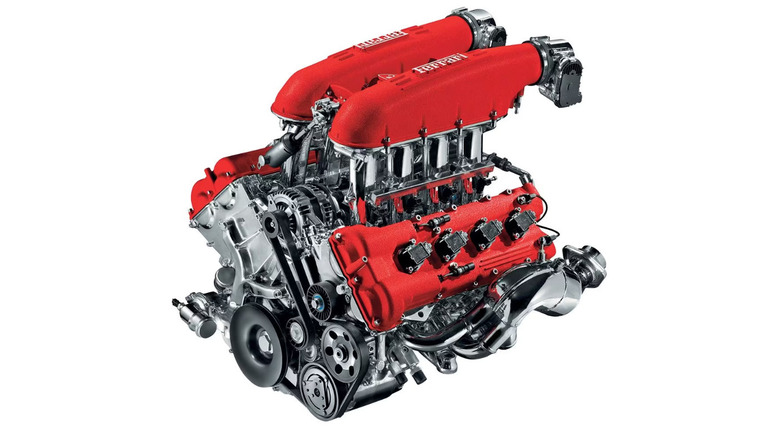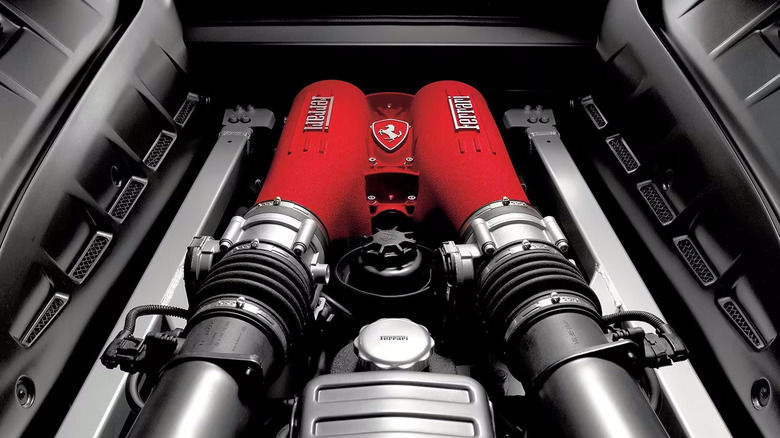Here's Why Ferrari's F136 Engine Family Has Won So Many Awards
Ferrari is known for its prancing horse logo, hyper-exclusive sportscars, and howling engines. One such engine is the F136 V8 family, a line of powerplants that served as the beating heart to a handful of some of Ferrari's most celebrated cars from recent years and several from similarly lauded Italian automaker Maserati. Under the care of Ferrari's product planners and engineers, the F136 first arrived in a Ferrari with the F430 in 2004, a car appearing in several video games, movies, and music videos. In that application, the 4.3-liter V8 threw down 483 horsepower.
Later, for the 2010 model year, Ferrari worked its magic on the F136, increased the displacement to 4.5 liters, and debuted it with the 458 Italia. In the Italia, it generated 562 horsepower. At the time, Ferrari claimed it was the world's most powerful naturally aspirated V8 by displacement. The 458's accolades include being on the cover of "Forza Motorsport 4" and glowing reviews from nearly every automotive publication of note like Top Gear, MotorTrend, Car and Driver, Edmunds, and more.
One Ferrari's best
The mere virtue of being in a Ferrari, let alone more than one, would land any family of engines ceaseless praise. The F136 was additionally in Maseratis like the GranTurismo, where it sported a displacement of 4.7 liters and 454 horsepower. In fact, the first-ever appearance of the F136 line was in the 2002 model year Maserati Coupe. In that car, it made 390 horsepower. It was no slouch in any application.
The F136, specifically, the 4.5-liter variant used in the 458 Italia, has itself received a number of internationally recognized awards. In UKi Media's International Engine and Powertrain of the Year contest, the F136 won Best Performance Engine of the Year in 2011, 2012, 2014, and 2015.
Even without winning awards, the engine deserves its own place in the halls of automotive history. It was in production for well over a decade in some of Italy's finest cars to ever hit the pavement, and the engine got significantly bigger and more powerful with just about every iteration without a single hiccup. It's not only a testament to the engine's versatility (as long as it's a six-figure Italian sports car) but also to Ferrari and Maserati's engineering skills.

